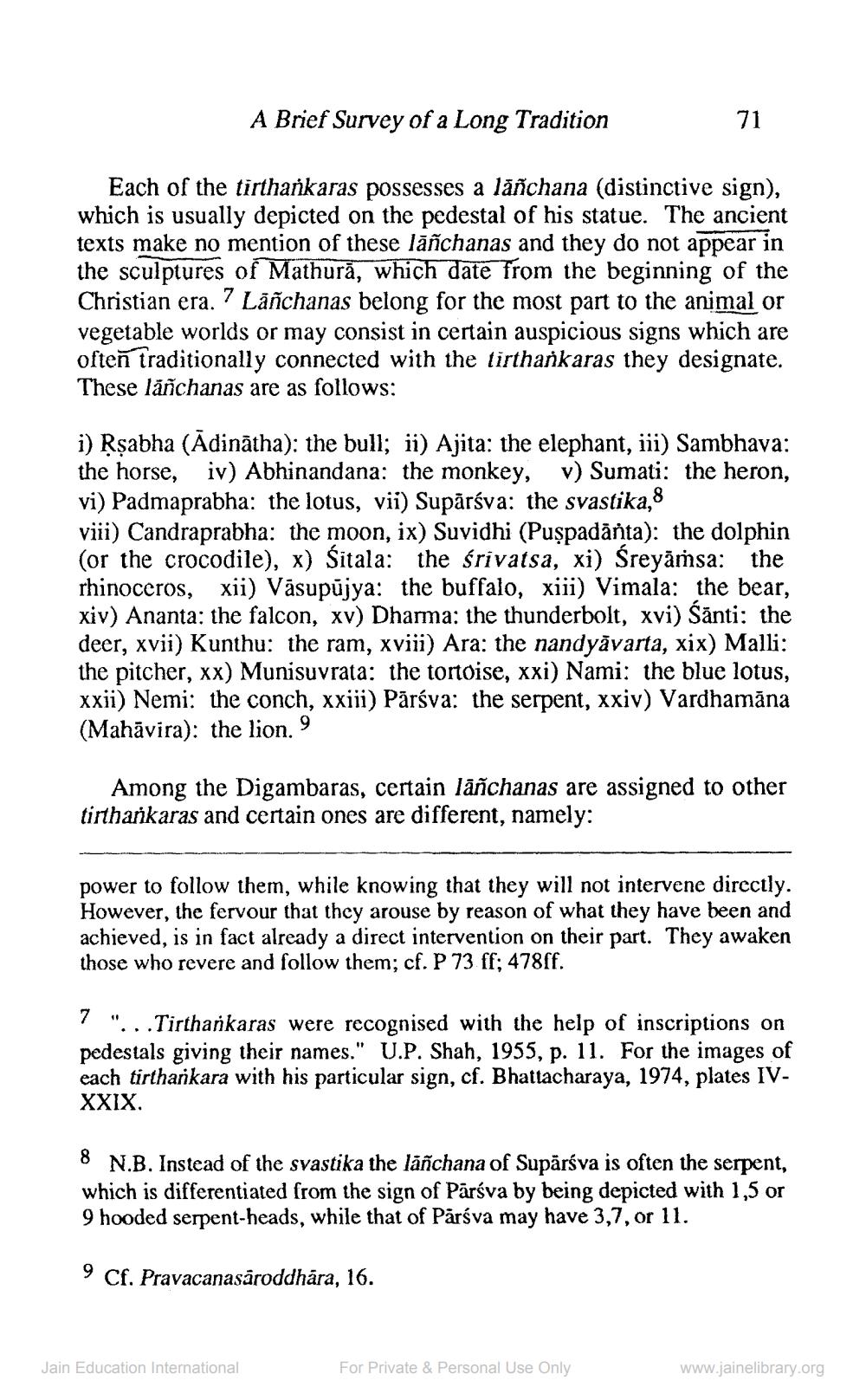________________
A Brief Survey of a Long Tradition
Each of the tirthankaras possesses a lãñchana (distinctive sign), which is usually depicted on the pedestal of his statue. The ancient texts make no mention of these lañchanas and they do not appear in the sculptures of Mathura, which date from the beginning of the Christian era. 7 Lañchanas belong for the most part to the animal or vegetable worlds or may consist in certain auspicious signs which are often traditionally connected with the tirthankaras they designate. These läñchanas are as follows:
i) Ṛṣabha (Ādinātha): the bull; ii) Ajita: the elephant, iii) Sambhava: the horse, iv) Abhinandana: the monkey, v) Sumati: the heron, vi) Padmaprabha: the lotus, vii) Supărśva: the svastika,8 viii) Candraprabha: the moon, ix) Suvidhi (Puṣpadānta): the dolphin (or the crocodile), x) Śitala: the śrivatsa, xi) Śreyāṁsa: the rhinoceros, xii) Vāsupūjya: the buffalo, xiii) Vimala: the bear, xiv) Ananta: the falcon, xv) Dharma: the thunderbolt, xvi) Śanti: the deer, xvii) Kunthu: the ram, xviii) Ara: the nandyāvarta, xix) Malli: the pitcher, xx) Munisuvrata: the tortoise, xxi) Nami: the blue lotus, xxii) Nemi: the conch, xxiii) Pārsva: the serpent, xxiv) Vardhamana (Mahāvira): the lion. 9
71
Among the Digambaras, certain lañchanas are assigned to other tirthankaras and certain ones are different, namely:
power to follow them, while knowing that they will not intervene directly. However, the fervour that they arouse by reason of what they have been and achieved, is in fact already a direct intervention on their part. They awaken those who revere and follow them; cf. P 73 ff; 478ff.
7 "
.Tirthankaras were recognised with the help of inscriptions on pedestals giving their names." U.P. Shah, 1955, p. 11. For the images of each tirthankara with his particular sign, cf. Bhattacharaya, 1974, plates IVXXIX.
8 N.B. Instead of the svastika the lañchana of Supärśva is often the serpent, which is differentiated from the sign of Parsva by being depicted with 1,5 or 9 hooded serpent-heads, while that of Parsva may have 3,7, or 11.
9 Cf. Pravacanasaroddhāra, 16.
Jain Education International
For Private & Personal Use Only
www.jainelibrary.org




